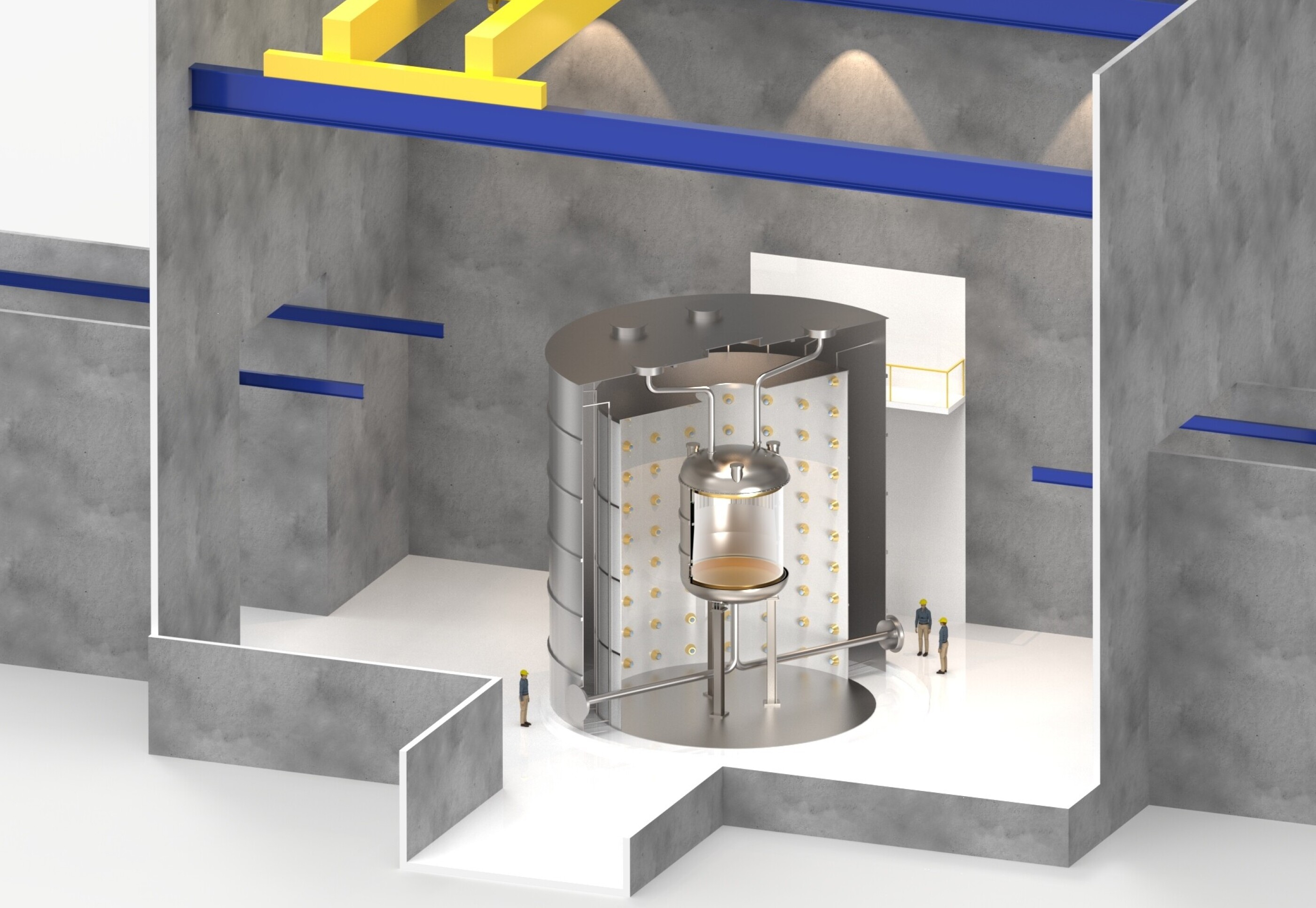 Concept for the experiment cavern. Credit: Liam Cooper, STFC Technology Department
The XLZD Consortium combines three world-leading collaborations, Xenon, Lux-Zeplin and Darwin, to design and build a single dark matter experiment.
Concept for the experiment cavern. Credit: Liam Cooper, STFC Technology Department
The XLZD Consortium combines three world-leading collaborations, Xenon, Lux-Zeplin and Darwin, to design and build a single dark matter experiment.
Several locations internationally are being considered to host this experiment, with the UK developing plans to potentially house the detector at STFC's
Boulby Underground Laboratory.
The UK consortium, led by Imperial College London, comprises 12 higher education institutions along with teams from STFC's Rutherford Appleton and Daresbury Laboratories.
A preliminary award of £8M was made from UKRI's Infrastructure Fund to support the UK development, including £1.2M allocated to enable our contribution.
Technology is contributing to three XLZD project work packages: engineering and skills (WP7), cryostat design (WP3) and cleanliness (WP6). However, the department is primarily responsible for WP7.
The aims of this WP include:
Coordinating the engineering and technical resources needed to deliver the UK contribution to the project.
Delivering project-specific infrastructure that sits at the interface between the facility and the experiment, such as non-standard cleanroom installation and integration of backup power.
Coordinating, assisting and liaising with international partners on the development and integration of their scope.
Creating an ecosystem capable of attracting and retaining talent and developing skills in the large variety of required specialisms: mechanical, electrical, cryogenic etc.
The scale of this contribution is significant as it involves coordinating the full design cycle of several major subsystems and the subsequent construction and installation at Boulby.
Technology staff must also overcome the challenges posed by underground fabrication of the titanium cryostat and the stringent requirements for radio purity and cleanliness.
The TD team must also ensure
the development and integration of a diverse range of ancillary systems and forge strong links across engineering teams.
Managing the requirements, specifications, interfaces, and services for each of the engineering subsystems is essential for ensuring the experiment is fully functional and meets the collaboration's goals.
Technology's contribution is managed by WP7 co-lead and project Chief Engineer Joe O'Dell. He will also be supported by Jason Tarrant (integration engineer), Barnaby Mathews (safety engineer), and Harry Byrne (CAD integration engineer).
Joe O'Dell, the Technology Department Project Engineering Team's lead engineer, said:
“It is a great privilege to play such a significant role in a potentially ground-breaking experiment that could help us to understand some of the greatest mysteries of the Universe.
“Achieving this goal requires us to overcome the many and varied engineering challenges of building and integrating a multitude of large and sophisticated systems deep underground, with extreme requirements that restrict the choice of materials and processes that can be used.”
For more information, read
STFC's full press release.
Read more science highlights
